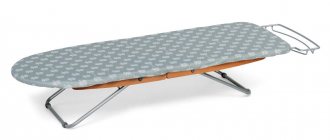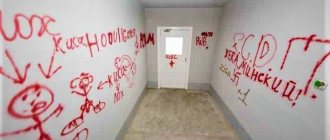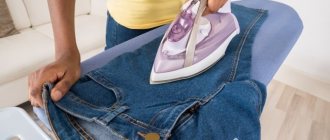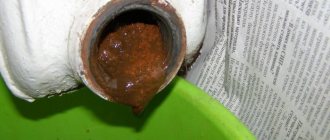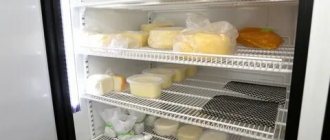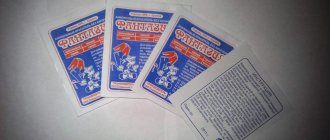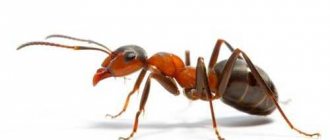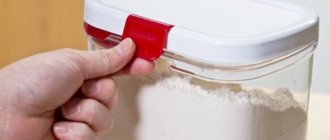Painted walls, just like furniture and home furnishings, require proper care and wet cleaning. But, depending on the coloring composition, it is necessary to take into account certain nuances and recommendations.
Thus, it is best to wipe walls painted with water-based emulsion with a dry soft sponge. But acrylic and silicone compounds are quite resistant to moisture. Therefore, any detergent (with the exception of aggressive chemicals) can be used for washing. How to prepare for this process and how to wash without streaks? How to remove stains and how to test a cleaning product for safety?
Preparatory work
Before you start wet cleaning, you must remove all decorative items (paintings, posters, mirrors) from the wall. The remaining fasteners in the wall are marked with small pieces of bright tape so as not to injure your hands during cleaning.
All furniture in the room is moved to the center. A polyethylene sheet is laid along the baseboards (this will help protect the floor from moisture).
Cleaning the wall from mold
You need to get rid of mold in the most radical way. If mold appears on the wallpaper, it will have to be completely removed and the wall surface thoroughly dried. Using a spatula, remove mold to the very base of the wall and apply an antiseptic primer to the cleaned wall.
Advice. Regular table vinegar works well against mold. It is applied to mold-infected areas and washed off after an hour. For prevention purposes, repeat the procedure several times. Also effective in the fight against mold is baking soda, an aqueous solution of which is sprayed onto surfaces. And ammonia mixed with water will get rid of mold no worse than a store-bought antiseptic.
Cleaning a wall covered with water-based paint
The water-based emulsion is very easy to wash off with water. Therefore, walls covered with this type of paint are washed only in exceptional cases. For work, prepare a very weak soap solution and a soft sponge (hard brushes are prohibited from use). Alternatively, instead of soap, you can use a solution of baking soda (3 tablespoons of soda are dissolved in 10 liters of water).
Attention: before use, the soda solution must be filtered so that small, insoluble particles do not scratch the wall.
Home remedy for children's drawings
It is also worth remembering home remedies for removing light stains. Baking soda turns out to be extremely useful in practice; with the help of a damp cloth, it will remove even dirt caused by using crayons...
You might be interested in:
- Correct painting of metal products
- Painting the walls
- Demolition of walls in an apartment: nuances
- How to stick foam plastic on walls for insulation
- Flocking walls
- Painting ceilings and walls with water-based paint: features, technology, recommendations
- Advantages and disadvantages of textured paint
- How to apply decorative plaster correctly
How to properly stick wallpaper on drywall- How to properly glue wallpaper on a clay wall
- Plasterboard wall covering
- Preparing wooden walls for plastering
Our channel in Telegram
Wash walls coated with oil or alkyd paints
This type of finish is maximally resistant to moisture, abrasion, and any mechanical stress . In addition to liquid detergents, walls coated with oil or alkyd paint can be easily washed with ammonia solution. It is enough to dissolve 1 tbsp in a liter of water. ammonia and moisten the sponge in the resulting product and thoroughly wipe the contaminated surface.
Surface with wallpaper
If you have wallpaper on the walls of your home, the following tips will help you keep them clean.
- Many types of wallpaper cannot be washed, for example paper. If your wallpaper is of this type, a vacuum cleaner or treating the surface with a damp cloth or broom will help. To check whether the wallpaper can be washed, it is recommended to conduct a test in an area that is not visible to others.
- Prepare a bucket or basin, collect water, add liquid soap or a special detergent to it. Take a lint-free cloth, soak it in water, wrap the cloth around the mop and wash the walls. It is important to use a white sponge so as not to stain the wallpaper. Detergent should be added in such an amount that it does not form too thick foam.
- After the wall washing procedure, you need to change the water. Take a sponge, soak it in water and wipe the walls. It is necessary to change the water as often as the situation requires, otherwise dirty stains cannot be avoided. To remove excess moisture from the wallpaper, use a terry towel and wipe the surface of the walls.
- It happens that stains appear on the wallpaper. They can be left behind when cleaning shoes carelessly, stained with paint, or leave greasy hand marks. To prevent this kind of pollution from disturbing the order in your home, you need to remove the stains. If you find stains on the wallpaper, then you need to use ordinary talc. Apply a small amount of the loose product to the stains, leave in this position for 15 minutes, then remove the product using a coarse bristle brush. An eraser will help get rid of greasy stains. If your child has painted the wallpaper, you can deal with the problem using vinegar and citric acid.
How to clean painted walls
Regardless of what paints the wall is painted with, wet cleaning is carried out in the following sequence:
- We prepare two buckets. One with cleaning solution, the second with clean water.
- Dip a soft sponge or rag in a soapy solution and begin to wipe the wall. Wet cleaning starts from the baseboard, smoothly moving up the wall, all the way to the ceiling.
- During the cleaning process, smudges and stains must be immediately removed with a cloth soaked in clean water. If soap smudges dry out, they will be very difficult to remove.
- After the wall has been washed, wipe the surface again with a clean damp cloth and then with a dry rag.
Attention: the wall should not be left wet, as moisture can ruin the paint.
Washing tiled walls
To wash tiles, you can use chlorine, which has a bactericidal effect. You can use a product that is used to clean windows. It usually contains ammonia, which is also used for cleaning tiles. If for some reason it is impossible to use chemicals, then limit yourself to a regular soap solution.
Cleaning starts from the top, but they usually wipe it dry from the bottom. To remove old stains, you can use six percent table vinegar, which is added to a spray bottle along with water (a glass of vinegar per liter of water).
Useful tips
- Wet cleaning of walls can only be done in a well-heated room . Otherwise, low air temperature and high humidity may cause mold to appear on the wall.
- The walls are washed at least twice a year. The first time is in the spring, after the heating season ends. The second is in the fall, before the house starts heating.
- To prevent stains from remaining on the surface of washed walls, during wet cleaning it is necessary to change and rinse sponges and rags more often.
- Talc will help remove greasy stains from the wall. It is enough to sprinkle the dirt with dry powder and leave it for half an hour. Afterwards, the talc along with the dirt can be easily removed with a damp sponge.
Taking into account all the recommendations for proper cleaning of painted walls, you can easily and quickly achieve ideal clean results in your home.
Is it possible to wash painted walls? (1 video)
Is this always necessary?
Before proceeding with any actions, it is necessary to analyze whether the walls will need to be washed before painting? Undoubtedly, this depends on many factors.
First of all, washing the walls before painting is advisable when there are smokers in the room. Stains from smoking tobacco appear on the walls of such rooms. Of course, before painting the walls, they should be removed, as they can negatively affect the painting process.
In addition to tobacco smoke, there is no positive effect from soot or oils. Therefore, applying paint to such a wall that is not cleaned of dirt and grease stains is clearly considered a mistake. For this reason, painting a kitchen can actually be a little more labor intensive than painting a living room or bedroom.
In addition to the above defects, there may be other defects on the wall. Who hasn’t come across walls painted by children? Traces of paints, wax crayons and felt-tip pens appear on walls painted by children. Of course, the marker is very difficult to wash. Such a wall must be thoroughly washed before repainting.
However, it should be noted that not every wall needs to be washed before painting. As you can see from the examples above, washing walls before painting applies to those walls that need to be updated. We are, of course, talking about old layers of coating on the wall. It should also be noted that the type of paint and its thickness also have a significant impact on the washing process.
The lightest paints, of course, are emulsion paints.
How to remove dried stains?
It is advisable to wipe dry plaster stains dry . But if there are tiles on the floor, you should not scrape them so as not to scratch the coating. To clean soft surfaces, vinegar solutions of varying concentrations are used.
If the plaster is difficult to clean, then it is worth purchasing any product with active acids in its composition. For example, Toilet Duck or something similar for cleaning plumbing. But it is not recommended to wash linoleum or laminate with such products, so as not to spoil the coating.
Attention: Before washing floors, you need to test the product on a piece of material. If it has not changed color, then you can wash the floors with this product.
Windows must be open while cleaning the premises . Otherwise, there is a risk of inhaling harmful fumes and getting poisoned.
From windows, including plastic ones
Before you start cleaning the windows, you need to clean the window frames:
- Traces of plaster are moistened generously with water.
- When the remaining material is wet, it can be easily removed with a spatula.
After removing the bulk of the plaster, begin washing the windows with soapy water. To prepare, you will need to mix 1 tbsp in 3 liters of warm water. l. dishwashing detergents. Soak a cloth in the solution and wipe the windows with it.
If folk remedies fail to remove stubborn stains, you need to use store-bought ones. For example, Mister Proper, Sanita, Domestos are suitable.
From the floor
Cleaning the floor, whatever it may be, from whitewash and plaster, can be problematic the first time, so cleaning is carried out several times:
- First, the floor is washed with a regular soap solution, for the preparation of which water is mixed with soap shavings. The solution is applied to the floor for 10 minutes, and then a suitable coating agent is used. At this stage of cleaning, you need to make every effort to wipe off the dirt.
- After cleaning, the floor is washed again using clean water.
Important
For each stage of washing, different rags are used so as not to smear dirt on the surface.
From the door
Before you start scrubbing the plaster off the surface of the door, it is important to know what material you are dealing with. Most often, doors are made from:
- wood;
- MDF;
- become;
- plastic.
Some surfaces may not withstand contact with strong detergents.
- If the door is made of wood or MDF, the plaster solution is removed with a sponge, water and a spatula. First, it is moistened with water, and then the soaked mass is removed with a sponge. For stubborn stains, use a spatula or blade.
- For metal doors, fine-grained sandpaper is used.
Difficult stains are moistened with water and then cleaned with a brush and soapy water. Sometimes after such manipulations the door is varnished again.
From the tiles
It is believed that the easiest way to remove dirt from a tiled floor is:
- You can use steel wool scourers to scrape off the plaster.
- To remove remaining dirt, use toilet bowl cleaners. About 2 liters of water are mixed with 50 ml of the product and the solution is applied to the traces of plaster. After 10 minutes, you can try to wipe off the stains.
- If the marks are not wiped off well, the concentration of the solution is increased by adding another 50 ml of the product. Once the stains are removed, the tiles are washed again with clean water.
From linoleum
Advice: To wash linoleum from plaster, exclude kerosene, gasoline, and ammonia - not all coatings tolerate these substances. Together with dirt, they can dissolve the protective coating.
Washing linoleum begins with washing the floors with clean water:
- If there is a lot of dirt on the coating, then add soap shavings to the water.
- If ordinary wet cleaning does not produce results, resort to turpentine. They treat the stain with it, and after a few minutes remove it with a damp cloth.
Sources
- https://www.ivd.ru/dizajn-i-dekor/uborka/kak-myt-okrashennye-steny-poleznye-sovety-dlya-raznyh-vidov-kraski-55311
- https://spote.ru/kak-pomyt-steny-pravilno-esli-ochen-nuzhno/
- https://zen.yandex.ru/media/id/5b90cd61bec38800abc5181c/5df1bc469c944600ae96f2e9
- https://mr-build.ru/podgotovka-osnovaniy/ochistka-sten.html
- https://openoblokah.ru/svoimi-rukami/kak-stoit-myt-steny-okrashennye-vodoemulsionnoj-kraskoj
- https://mschistota.ru/cleaning/myt-dekorativnuyu-shtukaturku.html
- https://okcomfort.com/steny/shtukaturka/kak-i-chem-otmyt.html
How to remove stains
How to remove stains
To get a good result, you need to not only know how to wash painted walls, but also how to remove stains from them. They appear for various reasons, but most often they are grease with dust and dirt stuck to it. We will look at several ways to clean such contaminants. In any case, we must remember that before treating the stain, you need to test the safety of the product on an inconspicuous fragment. Otherwise, there is a risk of ruining the paint or leaving streaks.
We offer several methods for removing stains.
Talc or starch
Effectively removes fresh oil splashes or drops of food residue. Take a paper towel or napkin and press it firmly to the surface. Sprinkle the dirt with powder and leave it for a while. Wait until the fat is absorbed into the starch or talc. Use a soft brush to sweep away the powder. If necessary, wipe with a cloth soaked in soapy water.
Dishwashing gel
When combined with hot water, the gel helps get rid of most stains. Much depends on the medium. For old traces of fat, it is better to choose concentrated preparations that dissolve it well. For example, Fairy, Aos, Frosch, etc. They are applied undiluted to the dirty area and left to soften greasy residues. Most gels are color safe and leave no residue.
After some time, the preparation with any remaining dirt is removed with a soft cloth or rags. No need to rub vigorously. The rag is carefully moved up and down without any extra effort. If too much soap has formed, it must be washed off. Finally, dry the base with a paper towel.

